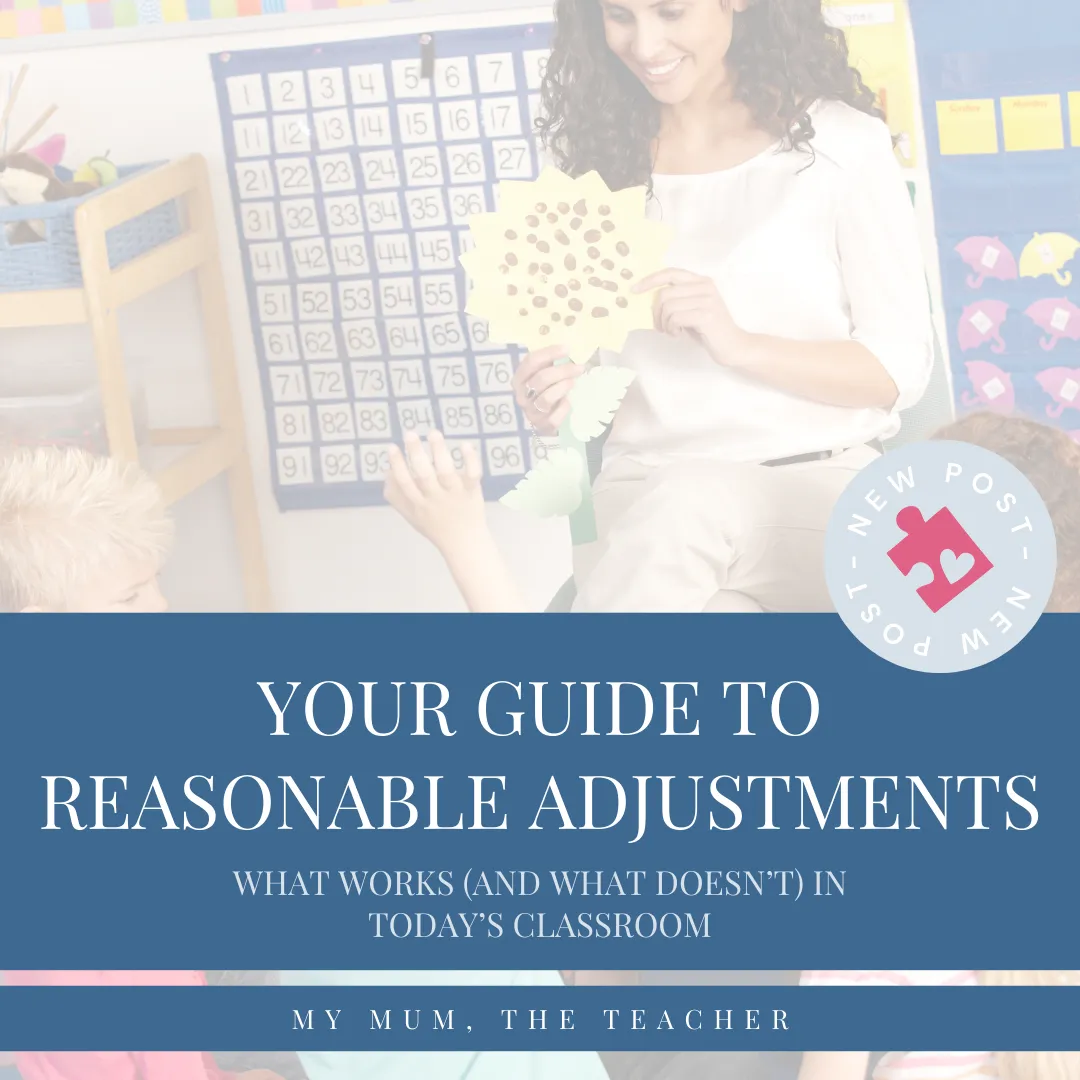
A Teacher's Guide to Reasonable Adjustments
What Are Reasonable Adjustments?
A Teacher’s Guide
If you’ve worked in an Australian classroom, you’ve likely heard the term “reasonable adjustments”. It’s a key concept in both inclusive education, the Nationally Consistent Collection of Data (NCCD) and the National Disability Insurance Scheme (NDIS) — but it can often feel vague in practice.
In short, reasonable adjustments are changes or supports put in place so that a student with a disability can participate in learning on the same basis as their peers. These adjustments are guided by the Disability Discrimination Act 1992 and the Disability Standards for Education 2005, and apply in every Australian school, regardless of sector.

The word reasonable is important. It recognises that while schools must remove barriers and provide supports, adjustments should be:
Practical — able to be implemented within the resources, time, and skills available
Effective — actually meeting the student’s needs and enabling meaningful participation
Fair — balancing the rights and needs of the student with those of other students and staff
Sustainable — able to be maintained over time without causing undue hardship to the school or teacher
Teachers Are Educators First — Not Therapists
It’s important to remember that your professional role is to educate in relation to the curriculum. You are not an occupational therapist, speech pathologist, psychologist, or counsellor — and you are not required to take on those roles.
What is required is that you:
Take on board recommendations from allied health professionals
Where possible, implement those strategies with fidelity in the school environment
Adapt them to suit the realities of your classroom, your timetable, and the curriculum
Maintain focus on teaching, learning outcomes, and student progress within the syllabus
This boundary protects both you and your students. It ensures that therapy-informed strategies support learning without replacing your core responsibility — delivering quality education.

When Adjustments or Expectations Become Unreasonable
Sometimes, well-intentioned requests or recommendations cross the line into unreasonable territory — either because they are beyond the school’s resources, conflict with safety, or fall outside the scope of a teacher’s role.
If you find yourself in this position:
Document everything
Keep clear records of the request, the context, and your response. Include dates, names, and any supporting evidence.Refer to policy and legislation
Anchor discussions in the Disability Standards for Education and your school’s inclusion policies. This keeps the focus on what’s required by law, not personal opinion.Seek support from leadership
Raise concerns with your principal, deputy, or learning support coordinator. These decisions should never rest solely on a classroom teacher’s shoulders.Propose alternative solutions
If a requested adjustment is not feasible, offer an alternative that still meets the student’s needs.
For example: Instead of providing one-on-one full-day supervision, arrange a mix of targeted support during key lessons and strategies for independent work.Involve the family in problem-solving
Most families will work collaboratively when they understand the constraints schools operate within. Focus on shared goals for the student’s learning and wellbeing.
By approaching these situations professionally and collaboratively, you protect your own workload and wellbeing while still acting in the best interests of the student.

Examples of Reasonable vs. Not Reasonable Adjustments
Scenario Reasonable Adjustment Not Reasonable Adjustment 1. Assessment tasks Providing extra time, alternative formats (oral presentation instead of written report) Exempting the student from all assessments without exploring alternatives 2. Classroom environment Seating near the teacher for better hearing/vision, minimising background noise Expecting the school to rebuild the classroom with full soundproofing 3. Curriculum access Breaking tasks into smaller steps, using visual supports Removing the student from curriculum content entirely without a plan for access 4. Behaviour support Providing sensory breaks, teaching replacement behaviours Allowing unsafe behaviour to continue without boundaries or intervention 5. Technology use Allowing use of assistive technology (speech-to-text, tablet) Purchasing highly specialised, non-educational equipment that’s outside school’s responsibility under the DDA

Reasonable Adjustments and the NDIS
The NDIS funds supports that a person needs because of their disability, but schools remain responsible for educational adjustments. This means that while NDIS therapists might suggest strategies or provide reports, the responsibility for making reasonable adjustments in the classroom sits with the school.
Example:
NDIS role – Fund an occupational therapist to provide strategies for handwriting.
School role – Provide a pencil grip, allow typed work, or adapt worksheets to reduce handwriting demands.
Key Takeaways for Teachers
Reasonable adjustments are a legal obligation, not optional “extras.”
They should be tailored to the individual student, based on their needs, strengths, and goals.
Collaboration with families, therapists, and the student is vital — but your role is to educate, not deliver therapy.
If a request becomes unreasonable, document, seek leadership guidance, and work towards an alternative that still meets the student’s needs.
Document adjustments (e.g., in an IEP, PLP, or IBP) to show how you’re meeting your obligations.
By understanding what’s reasonable — and how to respond when expectations aren’t — you can make small but powerful changes that help your students thrive, while keeping expectations realistic for yourself and your school.
